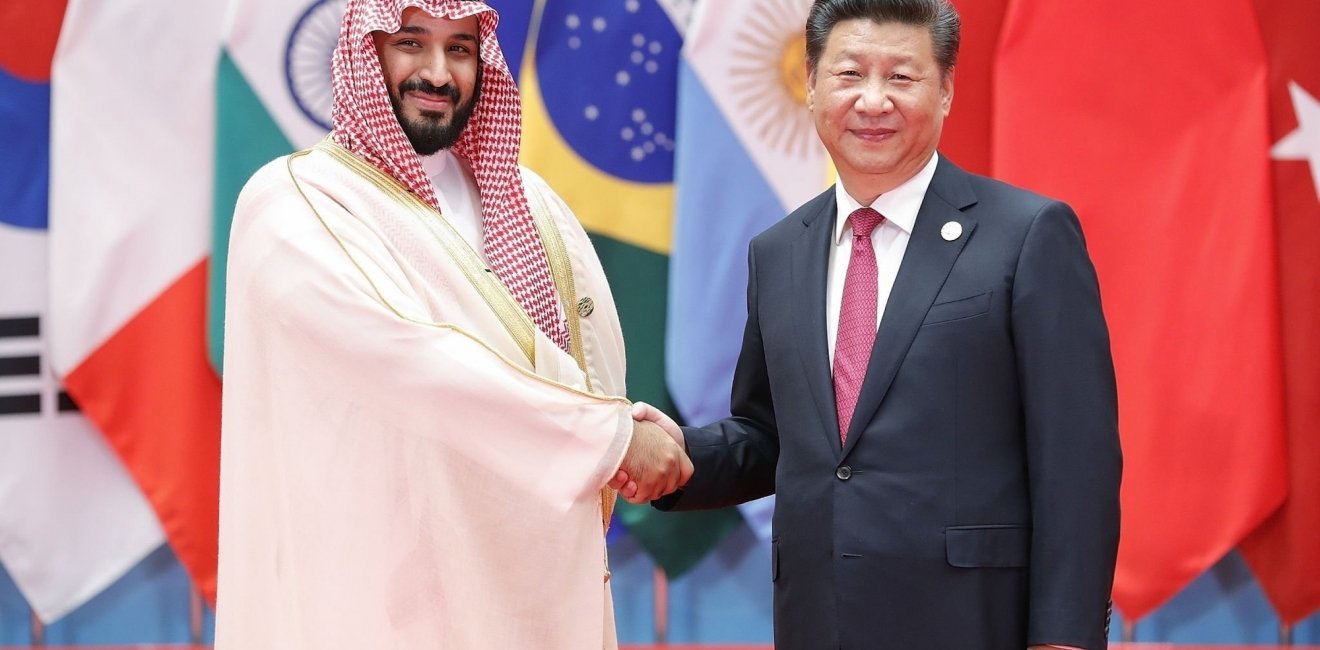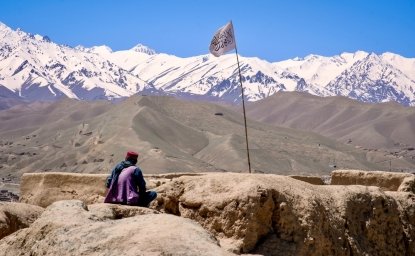By many measures, US influence and presence in the Middle East seem to be plummeting. Saudi Arabia is making peace with Iran and America’s closest Arab partners are bringing Syria back into the Arab fold—two countries the United States has long sought to keep isolated. Relations between Saudi Arabia’s crown Prince Mohammed bin Salman (MBS) and President Biden remain icy, while those between the kingdom’s de facto ruler and Chinese President Xi Jinping grow steadily warmer.
Saudi Arabia has strenuously ignored the Biden administration’s concerns about high oil prices that recently began to fall. The kingdom just cut its production by another 500,000 barrels a day to nudge them back over $80 a barrel. It has also turned its back on US warnings about adopting the Chinese company Huawei’s 5G mobile network. It not only signed up for it; Huawei is likely to locate its headquarters for the entire Middle East in Saudi Arabia.
Withdrawal symptoms
Another revealing indicator of America’s decline is the huge reduction in its military forces under The US Central Command (CENTOM) which covers the greater Middle East region from Afghanistan to Israel. Its commander, General Michael Kurilla, testifying before the Senate Armed Services Committee on March 13, said the American “force posture” had shrunk 85 percent since it peak in 2008—by 15 percent just last year alone. There is, he said, no longer “the large volume of planes, ships and troops we had in the region just five years ago.” The Pentagon is even transferring some of its top-of-the-line F-15 and F-16 jet fighters to Asia and replacing them with slow-moving A-10 attack aircraft that are being retired from the US Air Force. Also, there has been no aircraft carrier in the Gulf region since six months before the US withdrawal from Afghanistan.
Despite these withdrawal symptoms, the United States is hardly vanishing from the Persian Gulf... The Pentagon is taking the lead in implementation and sidestepping the frosty Biden-MBS relationship.
Despite these withdrawal symptoms, the United States is hardly vanishing from the Persian Gulf. The Biden administration has devised a new plan to try, in effect, to do more with less to check China. The Pentagon is taking the lead in implementation and sidestepping the frosty Biden-MBS relationship. The two have not spoken to each since their botched meeting in Riyadh on July 15 last year.
Biden’s national security adviser, Jake Sullivan, seem to be standing in for Biden. He talked to MBS as recently as April 11 and he pledged to be “in regular contact” and accelerate contacts between their respective national security teams. CIA director William Burns recently visited the kingdom and so, too, did Brett McGurk, Biden’s top Middle East advisor, and Amos Hochstein, his senior energy security official.
Security integrator
The United States has several major advantages over China even if it has become Saudi Arabia’s foremost economic partner. The Pentagon maintains a vast military infrastructure in the Gulf while China has yet to establish a single one. It has bases, or access to facilities, in all six Arab nations making up the Gulf Cooperation Council (GCC). There are also at least 40,000 military personnel stationed or on visit for joint military exercises. It even expanded its naval presence in 2019 with the signing of an agreement with Oman for access and expansion of its port at Duqm on the Arabian Sea, safely beyond Iranian speedboats omnipresent in the Persian Gulf.
The Pentagon has come up with a new description of its Gulf mission: “security integrator.” This is the term General Kurilla used in his Senate testimony. It means integrating GCC forces into US-led regional task forces and for near-constant military exercises. CENTCOM has spawned three such forces, numbered 59, 99, and 39, to patrol the waters and skies of the Red Sea and the two key Bab el-Mandeb and Hormuz Straits. One tenth of all seaborne oil passes through the former and one quarter through the latter.
The Pentagon has tried to make up for a smaller imprint in a number of other ways. It has carried out a dozen B-52 bomber flights from the United States to the Gulf since November 2020. These “Bomber Task Force Missions,” as CENTCOM calls them, involve the local air forces of the GCC nations as well. The United States is also now sending a nuclear-powered submarine, the USS Florida, to the Persian Gulf loaded with 154 Tomahawk missiles in place of an aircraft carrier. Gen. Kurilla told the Senate committee he himself had made 14 trips to the region and “hundreds” of phone calls, meetings, and video conferences with local military chiefs in his first 11 months in office.
The Pentagon is paying special attention to wooing Saudi Arabia, its oldest and most powerful Gulf Arab partner.
The Pentagon is paying special attention to wooing Saudi Arabia, its oldest and most powerful Gulf Arab partner. It has sent officers to help MBS draw up the kingdom’s first national defense strategy which is about to be made public. It is establishing for the first time in the Gulf a “Red Sands Experimentation Center” near Riyadh aimed at developing cutting-edge weapons to counter drones. These have become the weapon of choice of both Yemeni Houthi rebels and Iran for attacking targets inside Saudi Arabia. The Biden administration has also approved a $3 billion sale of Patriot missiles to counter Iranian and Houthi missiles. In September 2019, Iran successfully attacked two Saudi oil facilities with two dozen drones and missiles that cut its oil production in half for two weeks.
Partner of choice
Whether all this expanded Pentagon attention to Saudi Arabia and its other Gulf Arab partners will suffice to ward off steady inroads by China and keep the United States “the partner of choice,” in Kurilla’s words, remains to be seen. In his Senate testimony, the CENTCOM commander portrayed China as mounting “a growing strategic challenge to US partnerships, access, force presence and security” in the Gulf. In his view, the epicenter of the accelerating US-China rivalry is as much the Persian Gulf as the South China Sea.
The Yemen war had also become the chief obstacle to better US-Saudi relations, causing an end to all US support for the Saudi invasion there as well as suspension of all “offensive” US arms sales.
Ironically, China may hold the key to improved US-Saudi relations as well. Last month, it mediated the restoration of Saudi-Iranian diplomatic ties after a seven-year break. This appears to be facilitating an end to the eight-year Yemeni civil war, the key battleground in the Saudi-Iranian rivalry for primacy in the Gulf. The Yemen war had also become the chief obstacle to better US-Saudi relations, causing an end to all US support for the Saudi invasion there as well as suspension of all “offensive” US arms sales. Peace in Yemen might lead to their resumption. It might also lessen chances for another Gulf war if Iran comes to consider détente with Saudi Arabia more important than its dogged pursuit of a nuclear bomb.
The views expressed in these articles are those of the author and do not reflect an official position of the Wilson Center.






